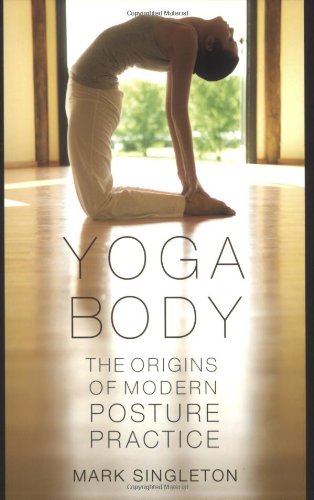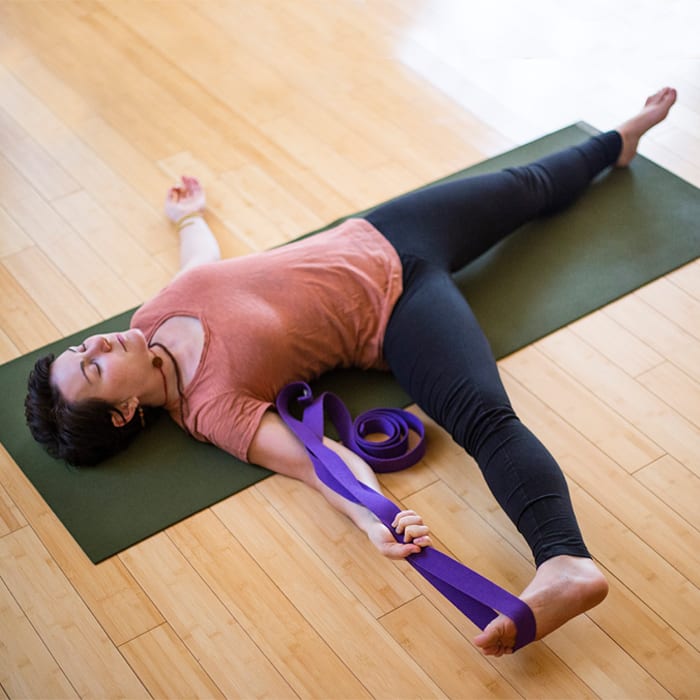
Participants in a "yoga for fat persons" class will find their bodies no longer a reason to be ashamed. They aren't afraid of trying new foods because they haven’t been worried about their weight for as long as they were. Many of these people are not comfortable with their body fat and will learn to embrace it in a yoga class.
Yoga is an excellent way to reduce your fat and increase your flexibility. While it might be difficult at first to bend into various poses, as you practice more you will find it easier. Don't push yourself too far though; if you do, you may end up injuring yourself or hurting yourself. While learning a new posture, it is important to be patient. Be gentle and kind.

The benefits of yoga are well known. Yoga can help reduce stress, improve your fitness, and promote overall well-being. It's also a great way of combating the negative effects associated with sedentary living. Two-thirds American adults are overweight. Therefore, it is important not to feel self-conscious about what your weight and body looks like. There are many options for yoga for people who are fat. No matter what your size, there's a class for you.
A great benefit to yoga for fat people? It is non-intimidating and safe. Although you may not feel comfortable sharing your practice with others, you will soon discover that yoga is a wonderful outlet for improving your body image. You won't be afraid to start a yoga program or see the results. It's a powerful tool to improve your mental, physical and spiritual health. The benefits will last for the rest of you life.
As a fat yoga instructor, you'll learn how to move with your body and feel confident in your skin. Fat yoga will not only help you feel better about yourself, but it will also help you achieve your goals. They don't take too much effort and are the most fat-friendly. Your flexibility, balance, power, and strength will be improved by fat yoga. You'll also feel better about yourself.

Beginners can also benefit from yoga. For beginners, it is best to take it slow and stick with the basics. Exercising too much yoga can increase stress on your joints and muscles. Start with the basics, and then work your way up. Yoga can help you lose weight and improve your self-image. You'll become stronger and be able to perform more difficult poses. You will soon discover the many benefits of yoga and be glad you did.
FAQ
What's a good workout plan for 7 days?
Three days per week should be spent on cardiovascular training, including running, biking, swimming, and two strength exercises using free weights, weight machine, as well as one flexibility/core exercise such as yoga, Pilates. It's essential to do each activity at least once a week. Each session should last no more than 45 minutes.
Cardiovascular Exercise: Running/Biking/Swimming
It is important to complete at least 60 minutes of cardio per week. Try to do 75 minutes per semaine for the best results. Cardio exercises can help improve blood flow and stimulate muscle growth.
Strength Training
Cardio exercises work on the heart and lungs. Strength training works on the muscles and bones. Strength training helps you burn calories even while resting.
Flexibility & Core Workouts
You can strengthen your entire body by strengthening flexibility and core exercises. Both yoga as well as Pilates are great choices.
Are There Any Benefits to Yoga?
Yoga has been popular since ancient times. Celebrities, as well as everyday people who are looking to stay fit and healthy, have made yoga a hugely popular choice.
Yoga is great because you can stretch your muscles and strengthen them. It calms you down and relaxes you.
Yoga is different from other types of exercise in that it focuses on breathing techniques.
Practice a variety of poses to increase your flexibility and balance.
Is it true, that too much protein can cause kidney stones?
Protein helps maintain healthy bone and tissue. Over-consuming protein can result in calcium being excreted through the kidneys. This can cause kidney stones.
Not everyone who eats more than 2g of protein per kilogram (2.2 lbs) of bodyweight will get kidney stones. People can eat large amounts of protein and not get kidney stones.
By being careful with your sodium intake, you can prevent kidney stones. Sodium helps regulate water balance in the kidneys. Too much sodium can cause kidney stones.
You can also try reducing your protein intake if you get kidney stones. About half of adults' daily caloric intake is made up of protein. It is possible to lose weight by cutting down on your intake of proteins.
If you do decide to eat more protein, don't go overboard. Aim for less than 20% of total calories from protein.
How quickly can I transform my body?
Your mindset must be changed. You must first decide to change.
Once you've decided to make a change, you must commit to working on your fitness for at least three months.
You will then need to choose a program that is compatible with your lifestyle.
You also need to set realistic expectations. You shouldn't waste money on a gym membership that doesn't allow you to put in the effort and time required to reach your goals.
Instead, make use of your time outdoors.
You can lose 1 lb if you walk around the block for one hour each day.
Now that you know what you're going to do start planning how you will organize your life to fit this new plan.
This includes scheduling a time to exercise each morning before you leave for work and taking breaks throughout the day so that you can move.
It is important to reward yourself when you reach milestones. You can buy accessories and clothes that reflect your success.
Do I have to exercise every single day?
No! At least 30 minutes moderate-intensity exercise five days per week is a good goal. It means you need to exercise hard enough or walk fast enough that you are slightly out-of- breath.
What does butter do for men?
Butter is one the most nutritious sources of saturated oils. This type fat is great for your skin and hair. It also helps you build stronger bones.
Vitamin K in butter also prevents bleeding from cuts, bruises and other injuries. Vitamin K and vitamin C work together to prevent bruising.
Butter is rich in minerals such as calcium, potassium, and phosphorous. These elements encourage stronger bones.
However, butter has some drawbacks. Butter is high in cholesterol. Studies show that too much cholesterol can increase your risk of developing heart disease.
Also, butter is high in saturated fat, contributing to obesity and increased cholesterol levels.
You can spread butter on bread if you are forced to use it. Bread will absorb more oil than pasta or potatoes.
Statistics
- According to the American Heart Association, blood pressure should be checked at least once every two years, beginning at age 20. (my.clevelandclinic.org)
- By John Thompson Take a whopping 38% off a set of PowerBlock Pros. (menshealth.com)
- Are You One of the 20% of Guys (mh.co.za)
- The PRS enabled risk stratification for overall prostate cancer and lethal disease with a four-fold difference between men in the highest and lowest quartiles (HR, 4.32; 95% confidence interval [CI], 3.16-5.89). (pubmed.ncbi.nlm.nih.gov)
- 10 pounds in a month is likely during a lean bulking phase, especially for beginners. (muscleandstrength.com)
External Links
How To
How can a man be fit in only 30 days?
Breaking down your fitness goals into smaller, more manageable steps is the best way for you to reach your fitness goals.
You need to make sure you are working towards the goal each day. This could mean doing 10 pushups every 5 minutes or running 3 km.
This will ensure that you see positive results if you practice it consistently over time.
Consistency is the key here. You must keep going until you succeed.
What is the difference between Aerobic Fitness (or Anaerobic Fitness)?
Anaerobic fitness refers to the ability of our bodies to perform intense physical work without oxygen. During periods of high-intensity exercise, we use anaerobic pathways to provide enough energy to complete the task. Anaerobic pathways can include glycolysis, creatinephosphate, the Phosphagen, and lactic acids.
Aerobic fitness, on the other hand, is a sustained low-intensity exercise. The primary source of energy for aerobic exercise is oxygen. The aerobic pathway is more efficient than the anaerobic.
You must build your aerobic capacity before you can run a marathon. If you only focus on building up your anaerobic capacity, you won't be able to finish the race.
Aerobic fitness may also be known as cardiovascular fitness. The most common methods of determining cardiovascular fitness are step tests and VO2max testing.
VO2 Max Test
VO2max is the maximum oxygen (O2) that your body can use while exercising. This test determines how much O2 your body can use during exercise.
This is the best test to assess cardiovascular fitness. This test requires expensive equipment, and highly qualified professionals to administer.
Step Tests
Step tests are a quick and easy way to test your cardiovascular fitness. They involve walking or jogging on a treadmill or track for a certain duration based on your age and weight.
These tests are inexpensive, easy to conduct, and can be done almost anywhere. For example, you could walk on a treadmill 20 minutes and then stop. You should maintain a constant heart rate throughout the session.
This is the "Bruce Protocol". Bruce was himself a runner and developed the protocol after realizing his heart rate wouldn't increase when he ran for longer distances.